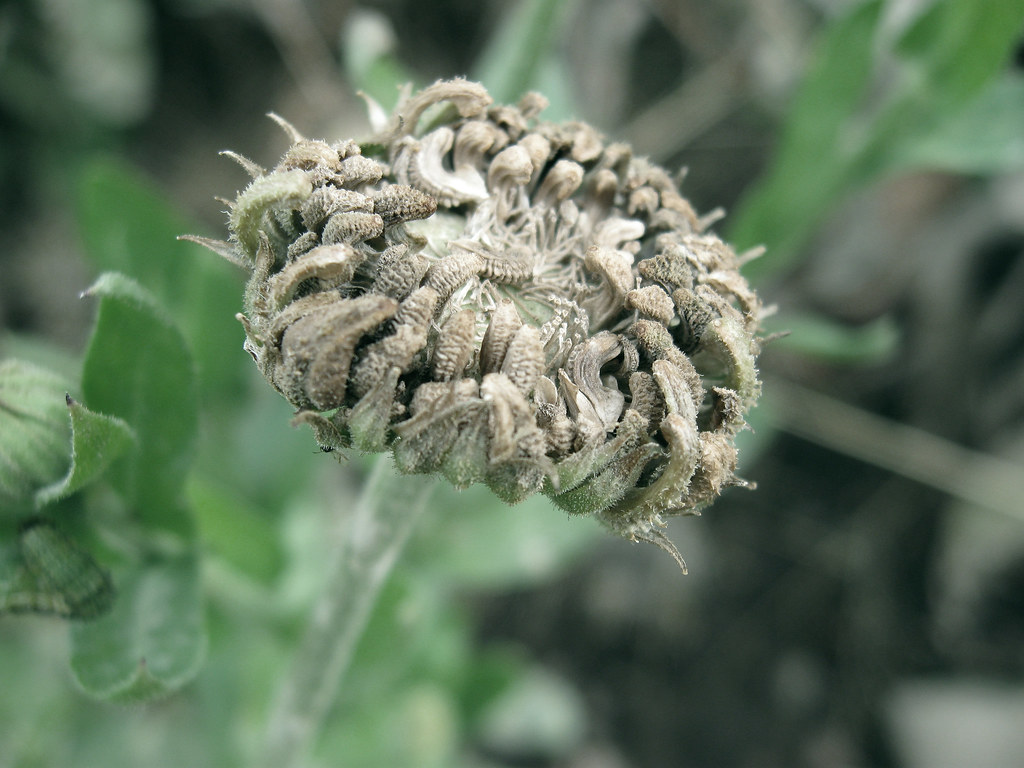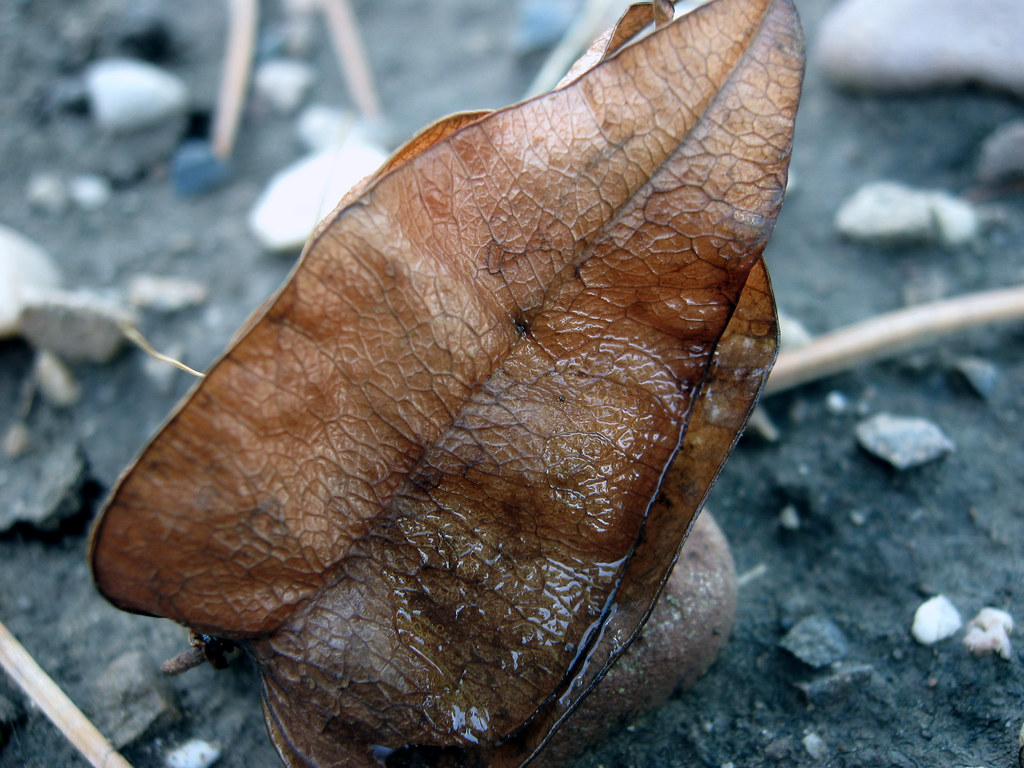For instance, if you have a picture of a dead flower, it will create a generally gloomy feeling. To really emphasize that mood, you could partially desaturate the image. Be careful though—if you completely desaturate the image, you get black & white, which doesn't necessarily make a picture seem more melancholy.

click to enlarge, or see it on Flickr
As you can see, the colors are still there (especially in the green leaves), just very muted.
A slightly more advanced idea is to change the lighting. This is primarily done while composing the shot, but you still have at least a little influence over the lighting in Photoshop. For example, this picture of a leaf was taken on an overcast day.

click to enlarge, or see it on Flickr
While I was optimizing it on the computer, I noticed that the wet patch on the leaf, combined with the damp ground, made the leaf look like a survivor of a recent rainstorm. To accentuate this effect, I added quite a bit of blue tinge in the Levels adjustment, and voila—it looks like the photo was taken on a rainy day. Had I noticed this mood possibility while I was taking the photograph, I might have tried a white-balance adjustment to give me a more natural-looking blue cast.
Just as images can be partially desaturated to make them gloomier, saturation can be added to make them seem more vibrant and happy. Similarly, light and white-balance adjustments can cool down an image or warm it up. Don't go overboard though—the image should still appear pretty natural once editing is over, rather than looking like it just made a daring escape from the Piknik factory. I usually take one image with a correct white balance in case the artistic one doesn't turn out, and then several with various other white balances (flourescent, daylight, etc.).
Tinker around with your composition, white-balance, levels, lighting, saturation, curves, and contrast to help set the mood of your photos. As you get better, your photo quality will increase, and your images will start to be more eye-catching.


No comments:
Post a Comment
Like what you see? Have a question? Leave me a comment!